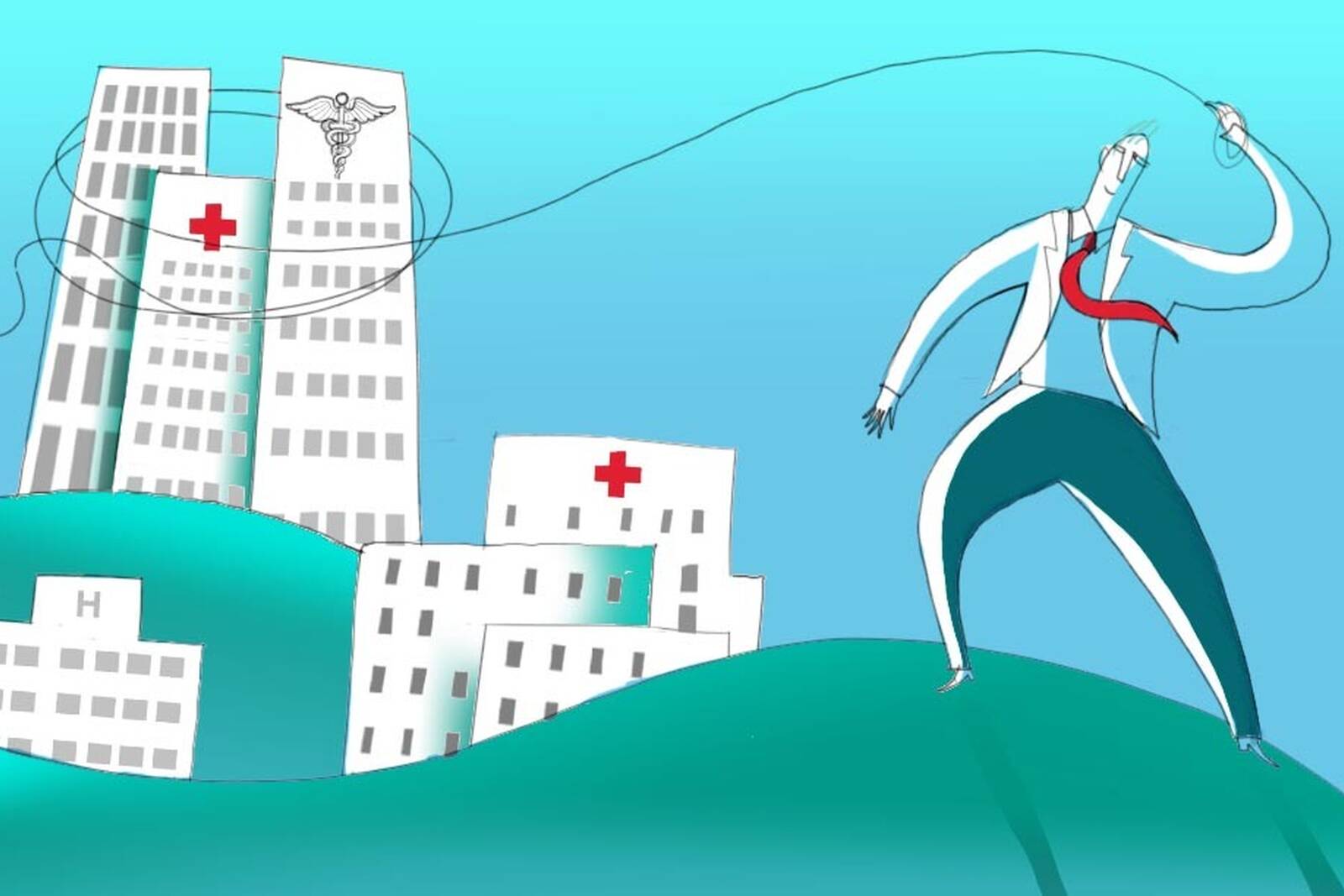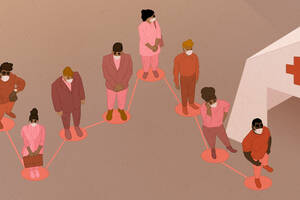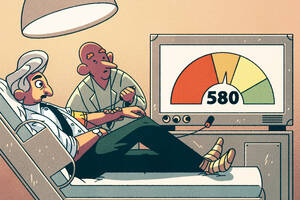Economics Healthcare Apr 4, 2019
When an Industry Consolidates, What Happens to Wages?
A surprisingly consistent answer has emerged in one sector: healthcare.

Economists and policymakers have spent the past several years grappling with a stubborn question: As the U.S. unemployment rate has dropped to a multi-decade low, why aren’t workers seeing notable raises?
Some experts point to the rise of mergers and acquisitions across corporate America as the culprit. The argument goes something like this: Mergers result in fewer firms dominating a market, which creates an increasingly concentrated labor market. With fewer employers to compete to hire each worker, workers find themselves with fewer options—and ultimately accept lower wages.
This common-sense argument has surfaced everywhere from Senate bills to Federal Trade Commission hearings. But few academic studies provide empirical evidence to back it up.
So Kellogg’s Elena Prager and Matt Schmitt of UCLA turned to an industry that has become heavily consolidated over the past few decades: healthcare. They focused on a single industry in order to determine whether wage stagnation and increasing labor market concentration are merely two simultaneous trends—or if they are directly related.
The pair conclude that, indeed, wage growth in a particular geographic market does in fact slow after a large healthcare merger—provided the workers’ skills are specific to healthcare.
“To be honest, I was surprised by what a consistent story the results seemed to tell,” Prager says. “Usually in empirical research, working with real data, you expect inconsistencies across analyses or inconsistencies with what’s known from the prior literature. But the picture that’s emerging here is remarkably consistent with theoretical expectations.”
This clear conclusion may help lawmakers create new prescriptions for antitrust policy.
Effects of a Concentrated Labor Market
Prager’s interest was piqued by recent studies that document that high labor market concentration goes hand in hand with low wages. As debates about wage stagnation and income inequality dominate the national stage, this correlation has led to increased calls for the Federal Trade Commission to turn its focus from preventing anticompetitive behavior in product markets to doing so in labor markets.
However, it can be difficult to make the case that labor market concentration causes wages to stagnate. So to further tease apart this relationship, Prager and Schmitt decided to examine the effects of consolidation within a single industry, focusing on hospital mergers between 2000 and 2010.
They chose healthcare for three reasons: First, because the industry has witnessed an explosion of M&A activity and market consolidation, the researchers were guaranteed plenty of examples for statistical analysis. Second, many hospital workers have specialized degrees that don’t translate to jobs outside the industry, making them particularly susceptible to any possible effects of consolidation. And third, the researchers could access unusually comprehensive compensation data via a federally mandated system that collects financial details from all U.S. hospitals that receive payment from Medicare.
“The picture that’s emerging here is remarkably consistent with theoretical expectations.”
Prager and Schmitt used an industry survey as well as M&A transaction data, news stories, and hospital websites to verify ownership changes and merger activity. And they defined a geographic market as a “commuting zone”—the contiguous counties through which people commute to work. Of the 709 commuting zones defined by the U.S. Census, 571 possessed a hospital and were included in the study.
Prager and Schmitt then measured employer concentration among hospitals in each commuting zone using the Herfindahl-Hirschman index (HHI), a commonly accepted measure that can range from close to zero, when many firms exist within a field, to 10,000. In 1998, they note, the median hospital was located in a zone with an HHI of 2,134, which grew to 2,665 by 2012.
They were also able to drill down into workers’ skill levels and group employees into three categories: low-skilled workers whose skills aren’t specific to healthcare, such as cafeteria workers; skilled workers in nonmedical jobs, such as HR executives; and skilled healthcare professionals—specifically, nursing administrators and pharmacists.
What Happens to Healthcare Worker Wages Post-Merger?
Results varied widely based on the worker category and the magnitude of a merger’s impact on the labor market.
The researchers found no evidence of decreased wage growth among low-skilled workers after a merger, regardless of the size of the corporate marriage. But wage growth was reduced among both types of skilled workers when a merger notably decreased employer competition.
Among the top 25 percent of concentration-increasing mergers, they found that the resulting wage growth was 1.1 percentage points lower for skilled nonmedical workers and 1.7 percentage points lower for nursing and pharmacy workers than it would have been otherwise. Average annual wage growth in the U.S. hovers between 3 and 4 percent.
“That means you’re losing about a third of annual wage growth,” Prager notes. “If you extrapolate that over the course of a few years, you’ll see it could make the difference between outpacing inflation and not keeping up with it.”
Why the different results across worker categories? It’s likely because low-skilled workers “could relatively easily substitute to a job in a completely different industry,” Prager says. “If you’re a hospital cafeteria worker, for instance, you could go to a fast-food job at a shopping mall, or switch out of food services entirely. But if you’re in nursing or pharmacy, your educational and training investments are much more specific and we assume you’d have a harder time finding alternate employment.”
Considering Alternatives
Prager and Schmitt next wanted to ensure that mechanisms other than employer concentration weren’t at play.
One possibility they considered is that demand itself decreases after a merger: fewer employers produce less output and therefore need fewer workers. But in comparing various measures of hospital output, such as inpatient discharges, they found no evidence of systematic reductions. Nor did there appear to be a reduction in full-time healthcare employees in an area post-merger.
“You’re losing about a third of annual wage growth.”
Another possibility was that a merger changes the composition of a workforce, shifting it toward lower-skilled jobs. As a result, the wage suppression would simply be due to a larger number of lower-paid jobs. By examining American Hospital Association data that tracks both higher-salaried registered nurses and lower-paid licensed practical nurses, the researchers weren’t able to find evidence of a shift in labor composition.
The researchers were also curious about what role labor unions might have in curtailing this trend. They hypothesized that strong worker power might offset some of the slowdown in wages.
So they examined unionization among nurses. They found that when the rate of unionization increased from around 4 percent of workers to around 15 percent, this eliminated nearly a third of the wage suppression that occurs after significant mergers.
“It seems that unions really are serving as this countervailing force,” Prager says.
Potential Policy Impact
Should the government consider labor market concentration when deciding when to greenlight a merger? Prager says there is still no consensus among economists or policymakers.
“It nonetheless remains true that elected officials and regulators are having these conversations,” she adds. For example, Sen. Amy Klobuchar, a Democrat from Minnesota who recently launched a presidential campaign, created legislation to address the issue.
Moreover, the FTC has recently held hearings on the topic, and more researchers are beginning to examine mergers’ effect on other industries, too. “I expect that regulators will continue to push on the topic as the research moves forward,” Prager says.



